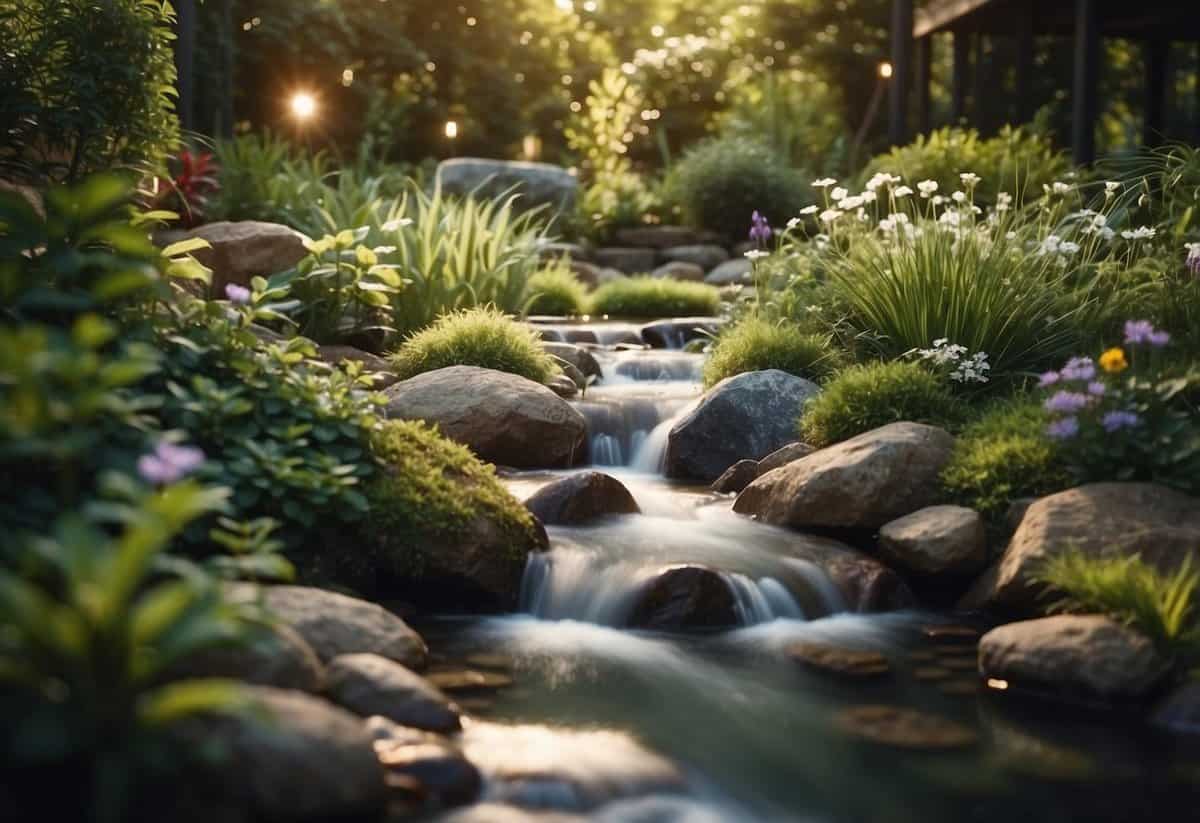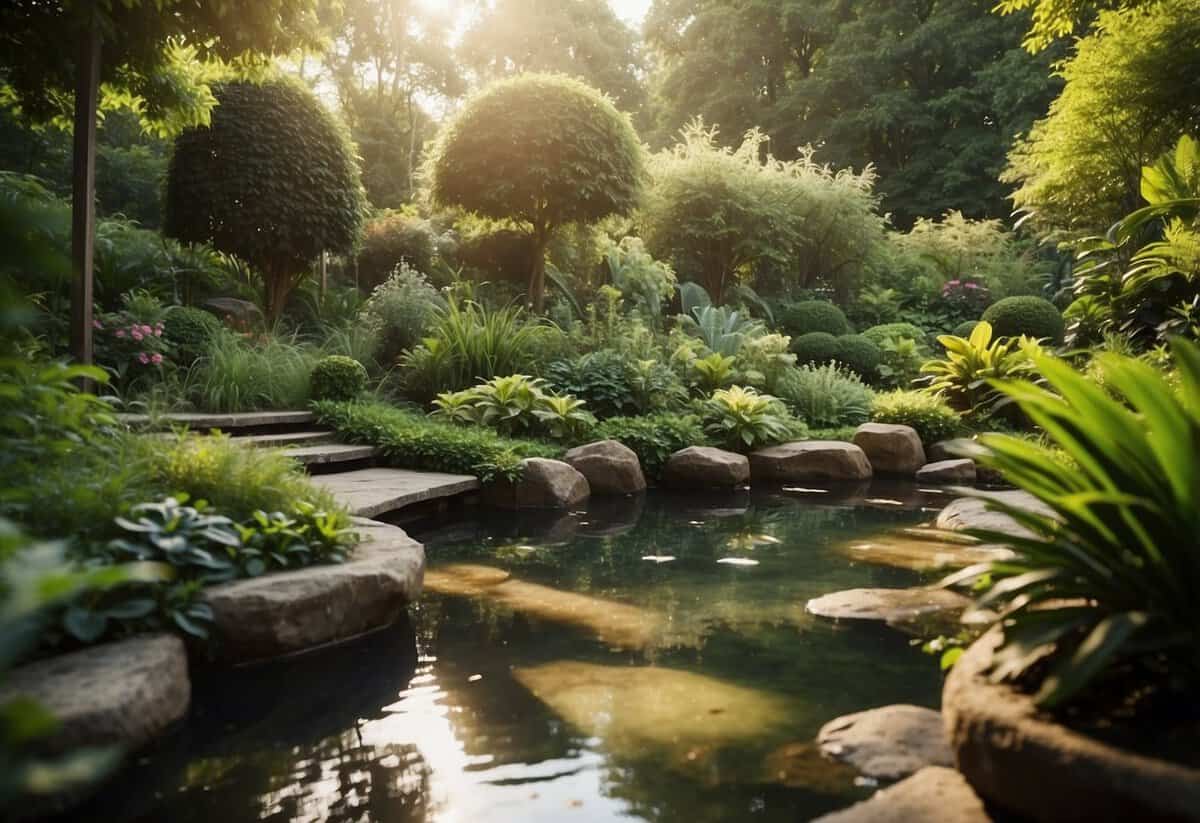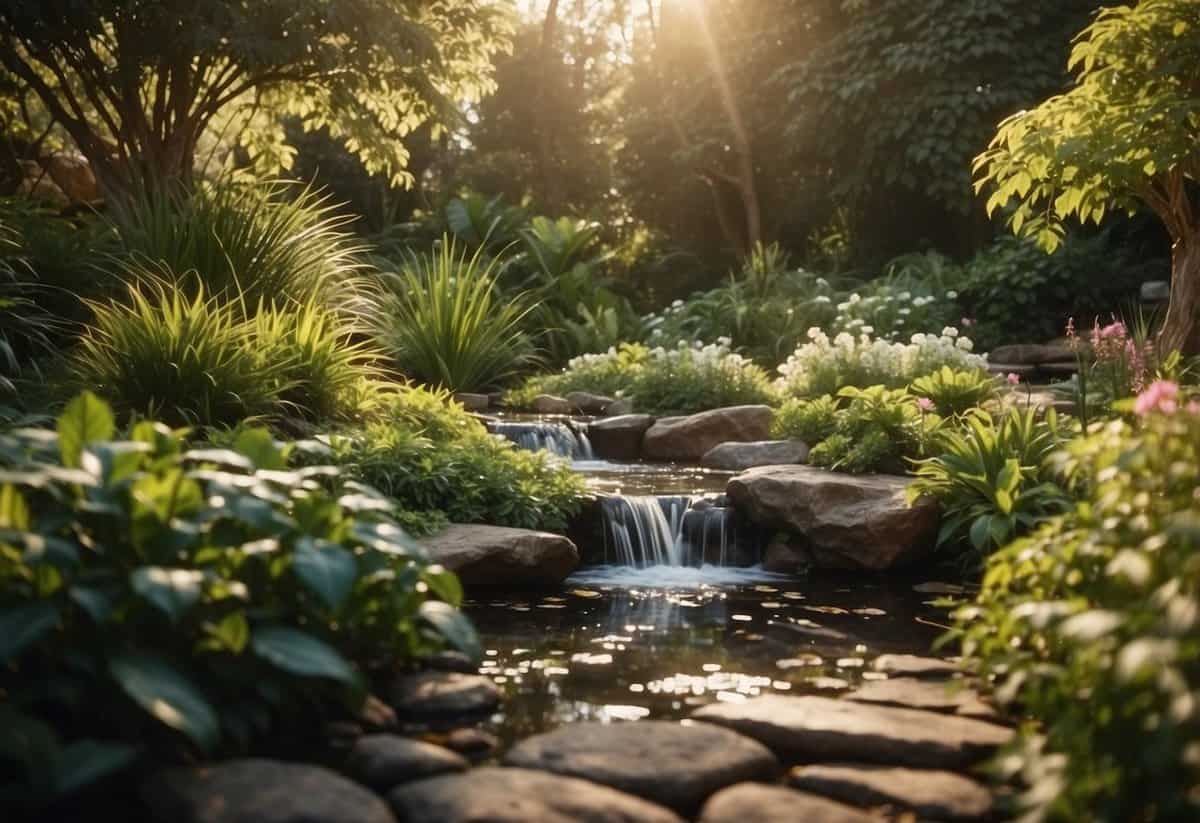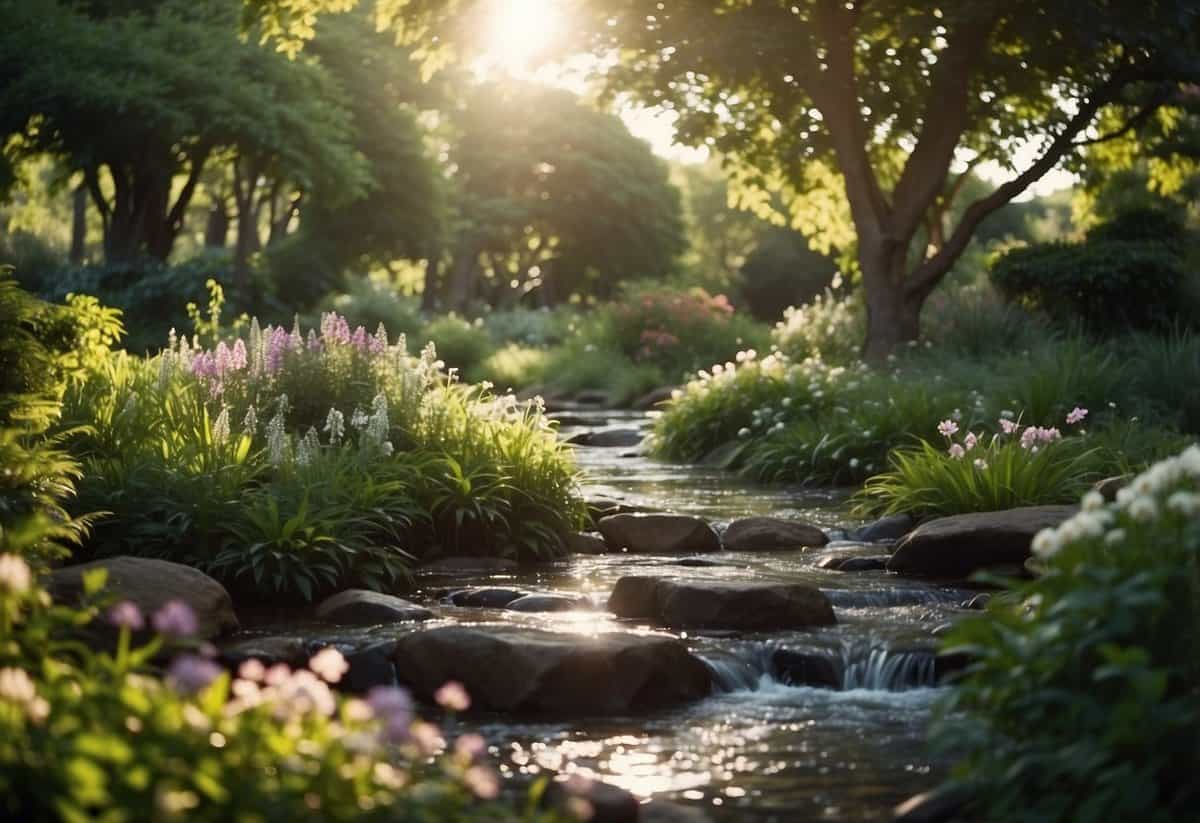What is Biophilic Garden? Embrace Nature in Your Backyard
Do you love spending time outside surrounded by trees, flowers, and fresh air? Imagine bringing that feeling right into your garden at home. A biophilic garden does just that by focusing on creating a close connection to nature. This type of garden design aims to improve your health and well-being by integrating natural elements into your living space.

Biophilic garden design uses plants, water features, and natural materials to make your outdoor space feel like a natural oasis. You can incorporate elements like plant groupings and terrariums, which help recreate the diverse, sensory-rich environments found in nature. Not only is this good for the environment, but it also benefits your mental and physical health by reducing stress and promoting relaxation.
Whether you have a small balcony or a large backyard, you can apply biophilic principles to your garden. Even simple changes, like adding more plants and using natural materials, can make a big difference. Check out these biophilic garden design trends to get started and enjoy the calming effects of nature right at home.
Understanding Biophilic Design

Biophilic design integrates natural elements into architectural spaces to improve physical and mental well-being. It draws on our innate connection to nature, called biophilia, to create healthier and more sustainable environments.
Origins of Biophilia
Biophilia is the idea that humans have an inherent connection to nature. This concept was popularized by biologist Edward O. Wilson in the 1980s. He argued that our reliance on nature for survival has ingrained this connection deeply in our DNA. By recognizing this bond, designers can create spaces that cater to our natural instincts, improving health and happiness.
Key Principles of Biophilic Design
The principles of biophilic design revolve around incorporating natural elements and patterns into the built environment. Direct experiences include things like natural light, plants, and water features. Indirect experiences use natural materials, colors, and shapes to mimic nature. This holistic approach integrates nature into the fabric of buildings, promoting well-being and sustainability. It’s crucial to create spaces that feel both functional and in harmony with nature.
The 14 Patterns of Biophilic Design
Terrapin Bright Green established the 14 patterns of biophilic design to guide how to apply these principles. These patterns are split into three categories: Nature in the Space, Natural Analogues, and Nature of the Space.
- Nature in the Space: Includes elements like plants, water, and animals.
- Natural Analogues: Uses natural materials, colors, and shapes.
- Nature of the Space: Focuses on spatial configurations like refuges and vistas.
Each pattern aims to align human needs with the environment, contributing to healthier and more productive spaces.
Taking these principles into account can transform how we design our living and working environments, ensuring they support our holistic well-being.
Elements of a Biophilic Garden

A biophilic garden blends natural elements such as plants, water features, and wildlife to create a harmonious space. These gardens make use of various components like soil, stones, and flora to support both nature and human well-being.
Incorporating Natural Elements
In a biophilic garden, natural elements play a crucial role. Mixing different types of soil helps plants thrive. Stones and natural materials can be used to create pathways or borders.
Including native plants attracts local wildlife like birds and butterflies. These natural elements bring life and movement into your garden. Use flowers of different colors to add visual interest and natural beauty. By doing so, you enhance the garden’s connection to nature.
Water Features and Their Importance
Water features such as ponds or fountains are key in a biophilic garden. The sound of flowing water creates a calming atmosphere. These features can also attract wildlife, including birds and amphibians.
Adding water plants like lilies can enhance the natural look. You can use different types of stones around the water feature to make it feel more organic. Water features also help in cooling the air, making the garden more comfortable during hot days.
Selecting Plants for Biophilic Gardens
Choosing the right plants is essential. Native plants adapt better to the local soil and climate. They require less maintenance and are more resilient. Incorporate a mix of flowers, shrubs, and trees for diversity.
Different plants attract various types of wildlife, enriching your garden’s ecosystem. Use flowering plants to bring color and scent. Opt for species that bloom at different times of the year to ensure year-round beauty. This variety not only looks good but also supports a wide range of local wildlife.
Benefits of Biophilic Gardens

Biophilic gardens offer significant advantages across various aspects of life. They improve physical and mental health, support the environment and biodiversity, and enhance the beauty and value of properties.
Physical and Mental Health Advantages
Biophilic gardens can help lower your stress levels and boost your overall well-being. The presence of plants, trees, and other natural elements can provide a calming effect, reducing anxiety and improving mood. Spending time in these gardens can also help lower blood pressure and improve heart health.
Studies show that exposure to nature can enhance productivity and focus. Green spaces in and around your home can provide a sense of tranquility and help you unwind, leading to better mental health.
Environmental Benefits and Biodiversity
Biophilic gardens support local biodiversity by providing habitats for various plants, insects, and animals. By incorporating native species, you can help balance ecosystems and support pollinators like bees and butterflies.
These gardens also offer environmental benefits. They can improve air quality, reduce urban heat islands, and conserve water. Using rain gardens and native plants can reduce the need for irrigation and help manage stormwater runoff.
Enhancing Aesthetics and Property Value
Biophilic gardens increase the aesthetic appeal of your home. Features such as vertical gardens and lush greenery can transform bland spaces into vibrant areas. This visual connection to nature can make your living environment more pleasant and inviting.
Moreover, biophilic design can boost property values. Homes with well-designed gardens are more attractive to potential buyers, and the integration of natural elements can set your property apart from others in the market. Investing in a biophilic garden can thus be a wise financial decision.
For more information, you can visit resources like EDN Garden or Homes & Gardens.
Designing and Implementing Biophilic Gardens

Creating a biophilic garden involves careful planning and sustainable practices. Using modern technology can enhance the connection between people and nature in residential and urban spaces.
Planning for Different Scales and Spaces
When designing a biophilic garden, consider the scale and space you have. For residential gardens, you might use native plants and water features to create a natural oasis. Urban spaces can benefit from vertical gardens or green roofs to maximize limited space.
For indoor spaces, consider incorporating natural elements like plants, sunlight, and natural materials to create a seamless connection with the outdoors. Remember, the goal is to make these spaces visually appealing and calming.
Sustainable Practices in Biophilic Gardening
Sustainable practices are essential in biophilic garden design. Use native plant species that require less water and are adapted to the local climate. Composting organic waste can enrich the soil, reducing the need for chemical fertilizers.
Additionally, integrating water conservation methods such as drip irrigation or rainwater harvesting can make your garden more eco-friendly. Opt for sustainable materials like reclaimed wood or recycled stone to enhance the garden’s natural feel.
Use of Technology in Modern Biophilic Design
Technology plays a significant role in modern biophilic gardens. Smart irrigation systems can optimize water use, ensuring plants get the right amount of water without wastage. Sensors can monitor soil moisture levels, helping maintain ideal conditions for plant growth.
Moreover, mobile apps can offer guidance on plant care, design ideas, and real-time monitoring of garden health. In urban areas, LED grow lights can supplement natural light, enabling indoor gardens to thrive even in low-light conditions. Using technology bridges the gap between traditional gardening techniques and modern innovation.
Implementing these elements helps create a sustainable and aesthetically pleasing green space that boosts well-being.
Biophilic Gardens in Various Settings

Biophilic gardens can enhance both residential and public spaces by integrating nature into the built environment. These gardens can thrive in various settings, from urban areas to hospitals and corporate spaces.
Residential vs. Public Spaces
In residential areas, biophilic gardens can transform backyards into serene natural sanctuaries. You might see plant-covered walls and green roofs that blend seamlessly with the house design. These elements connect indoor and outdoor spaces, creating a peaceful living environment.
Public spaces, like parks and promenades, use biophilic design to encourage community interaction and physical activity. Natural elements such as diverse plantings, water features, and shaded walkways make these areas inviting. Public biophilic gardens also support public health by providing green spaces for relaxation and exercise.
Biophilic Elements in Urban Environments
Urban environments benefit greatly from biophilic gardens. Green roofs are a popular feature, not just for their aesthetic appeal, but also for their functionality. They help reduce urban heat islands, manage stormwater, and provide habitats for wildlife.
Vertical gardens are another biophilic element that you might notice in cityscapes. They maximize green space in limited areas and enhance air quality. Urban biophilic gardens can also include community gardens, which bring people together and create a sense of belonging. Incorporating nature in cities improves overall well-being and quality of life.
Case Studies: Hospitals and Corporate Spaces
Hospitals have started using biophilic gardens to promote healing and reduce patient stress. For instance, studies show that views of gardens from hospital rooms can speed up recovery after surgery. Gardens in hospital courtyards provide patients and staff with a place to relax and rejuvenate.
Corporate spaces like Google offices use biophilic design to enhance employee well-being and productivity. Incorporating natural light, indoor plants, and green spaces helps create a more pleasant work environment. Employees who have access to such spaces tend to be happier and more productive, contributing positively to the company’s culture and success.
Overall, biophilic gardens in various settings bring numerous benefits, including improved mental health, community engagement, and environmental sustainability.







